What Is Your Zodiac Sign? Zodiac Sign Dates And More
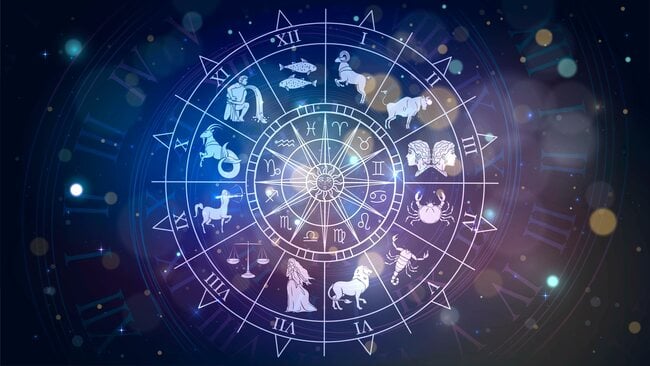
“What’s your zodiac sign?” You’ve probably been asked this question more times than you can count. Whether it’s when meeting an acquaintance, going on a first date, or even chatting with coworkers, the interest in astrology and zodiac sign compatibility is more popular than ever and on the top of many people’s minds. Even if you don’t read your horoscope regularly—or “believe in it” for that matter—you still, at the very least, are likely to know your zodiac sign.
RELATED: Full Moon Horoscopes
Astrology has been around for thousands of years, and since then, people worldwide have used it as a lens to not only better understand themselves and their own personalities, but other people, as well. When someone asks you your zodiac sign, they’re referring to your “Sun” sign, based on your date of birth.
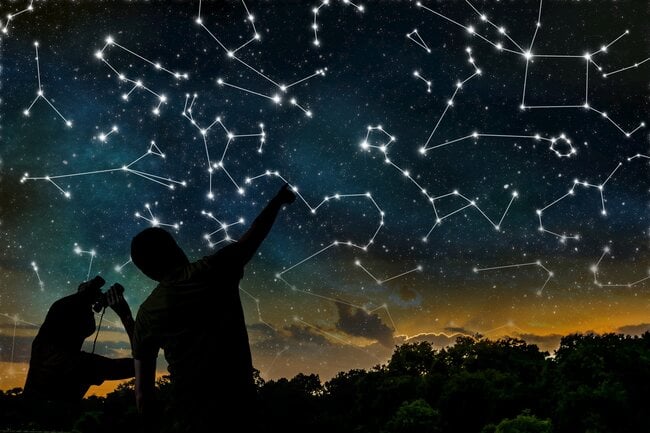
There are twelve different zodiac signs. Each has their own symbol, based on the image of the constellation that the ancients found in the sky. Not only this, over time humanity realized that each zodiac sign has their own unique personality traits, strengths, weaknesses, and characteristics, as well. Find your birthday within the dates ranges below and learn more!
The difference between Astrology and Astronomy
ARIES (MARCH 21 – APRIL 19)
Element: Fire
Symbol: Ram ♈
Ruling Planet: Mars
Quality: Cardinal
As the first zodiac sign, Aries are known as the leaders of the zodiac. They are passionate, pioneering, and bold, never afraid to follow their heart’s desires and conquest whatever it is that they set their eyes upon. As eternal children at heart, Aries like to enjoy life by creating opportunities for themselves and taking an action-oriented approach. They are especially independent and ambitious, but also prone to a feisty attitude when their buttons are pushed! Yet, despite a predisposition to getting fired up, they are also able to release their anger quite readily once it has been burned off.
Learn more about Aries zodiac sign
TAURUS (APRIL 20 – MAY 20)
Element: Earth
Symbol: Bull ♉
Ruling Planet: Venus
Quality: Fixed
Steady, loyal, and strong, Tauruses are all about building a life of stability. They like to take their time, enjoying life and stopping to smell the roses. As the most sensual zodiac sign, they crave to indulge their senses whenever possible, immersing themselves in beauty and harmony. They tend to be particularly hardworking, determined to build wealth over the long-term. Because of their connection to nature and consistent desire for pleasure, they hunger for peace, passion, and romance. Yet, because they can be quite focused on what they want or believe, they may find themselves digging their hooves into the ground to defend their opinions with a stubborn mindset. Ultimately, though, they tend to be very practical, kind, and grounded people.
Learn more about Taurus zodiac sign
GEMINI (MAY 21 – JUNE 20)
Element: Air
Symbol: Twins ♊
Ruling Planet: Mercury
Quality: Mutable
As one of the most curious zodiac signs of all, Geminis are always eager for new horizons and adventure! Their minds—and ideas—move a mile a minute. Known to be quite excitable and quick-witted, they tend to have highly developed communication abilities and love to intellectualize their emotions. When it comes to connecting with others, they are also very social and versatile at blending in with different groups of people. Yet, because they tend to have two sides to their personalities, they can often possess one side that is charming and cordial, with another that is a bit more fickle and judgmental. Once they conquer this, they are able to more easily stand on higher ground.
Learn more about Gemini zodiac sign
CANCER (JUNE 21 – JULY 22)
Element: Water
Symbol: Crab ♋
Ruling Planet: Moon
Quality: Cardinal
Known to be one of the most sensitive and emotional of the zodiac signs, Cancers are also one of the kindest and compassionate of all. However, because they are symbolized by the crab, they can also possess a hard shell to crack before they are willing to trust others and be vulnerable. Ultimately, though, because they often treasure family, domesticity, and tradition they are excellent homemakers and famous for their nurturing abilities. Cancers are also highly empathic, softly romantic, and tremendously loyal to those whom they value. Just watch out for their intense emotions if you leave them high and dry!
Learn more about Cancer zodiac sign
LEO (JULY 23 – AUGUST 22)
Element: Fire
Symbol: Lion ♌
Ruling Planet: Sun
Quality: Fixed
Bold, courageous, and confident, Leos like to rule the roost and be the center of attention! Even if they don’t like to stand in the center of the limelight, they still like to be instrumental in the lives of those around them. Respect and integrity are important to them, and they tend to thrive in positions of authority. However, this can also lead them down a darker path of pride or greed. Ultimately, though, at their core, Leos are romantic, creative, and affectionate, eager to live life vividly and enjoy life to the fullest.
Learn more about Leo zodiac sign
VIRGO (AUGUST 23 – SEPTMEBER 22)
Element: Earth
Symbol: Virgin ♍
Ruling Planet: Mercury
Quality: Mutable
As one of the most analytical and focused zodiac signs, Virgos not only understand the grand perspective of any plan, but also the nitty-gritty on how to map out the most cautious strategies. They are able to intuitively know how to organize people and the world around them, which often aids them in being excellent managers. They also value hard work, productivity, and domesticity, able to juggle it all! However, one of their shadow sides involves an innate level of perfectionism—which can make them hypercritical or anxious in regards to themselves or others. As long as they are able to diffuse this trait, they will find a greater level of peace.
Learn more about Virgo zodiac sign
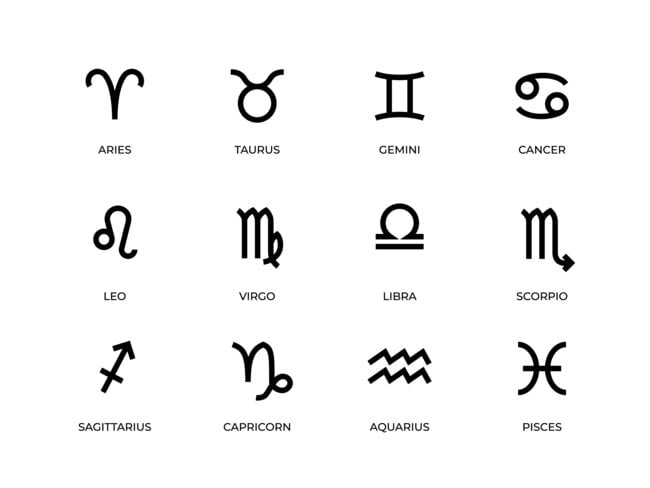
LIBRA (SEPTEMBER 23 – OCTOBER 22)
Element: Air
Symbol: Scales ♎
Ruling Planet: Venus
Quality: Cardinal
Known as natural peacekeepers, Libras love to provide a sense of balance and justice in their lives and relationships. Harmony is of the utmost importance to them. Also, since they enjoy social connections tremendously, they are often particularly romantic, popular, and charming, gifted in communication and negotiation. Yet, because they do ultimately take an intellectual approach to everything, they can be notoriously flakey or indecisive when faced with challenging situations. Last to note about them is that they are true lovers of beauty and luxury, always eager to immerse themselves within it whenever possible.
Learn more about Libra zodiac sign
SCORPIO (OCTOBER 23 – NOVEMBER 21)
Element: Water
Symbol: Scorpion ♏
Ruling Planets: Pluto and Mars
Quality: Fixed
Often cited as the most intense zodiac sign of all, Scorpios are “all or nothing” kinds of people. This is because at their very base, they are tremendously passionate and emotional individuals. While many people can say Scorpios have a bad reputation, they are not inherently bad people. In fact, they can be one of the most devoted, loving, and sensual of all zodiac signs—that is, if they like you. Scorpios tend to have a laser focus on what they do—or don’t—desire. They often possess great psychological depth, able to analyze and assess themselves and others with incredible precision as they also blend in their intuition. When they harness their skills, they can be remarkably hard working and great agents of positive transformation.
Learn more about Scorpio zodiac sign
SAGITTARIUS (NOVEMBER 22 – DECEMBER 21)
Element: Fire
Symbol: Archer ♐
Ruling Planet: Jupiter
Quality: Mutable
When it comes to one of the most naturally rebellious of all zodiac signs, that would certainly be a Sagittarius. This feisty, impulsive, and spontaneous zodiac sign hungers for adventure and new experiences constantly. They refuse to settle or be contained in a cage. If they are, they will do everything to break out of it! Freedom, exploration, and expansion are integral to their natures. This can lead them to ultimately become very philosophical, experienced, and wise, as they form unique perspectives of the world in which they live. Yet, one challenge they may experience is that they may be particularly restless and unable to focus and commit to one thing. By working through this, they can achieve great things.
Learn more about Sagittarius zodiac sign
CAPRICORN (DECEMBER 22 – JANUARY 19)
Element: Earth
Symbol: Goat ♑
Ruling Planet: Saturn
Quality: Cardinal
Strong, patient, and focused, Capricorns are eager to build everything in their lives for the long-term. They can be tremendously hardworking and ambitious, as they like to build a vision of what they’d like to achieve and then slowly but surely plod along toward it. They have great levels of discipline and self-sacrifice, able to funnel their grounded and practical natures toward their goals. However, despite these positive attributes, they may also be stern and detached emotionally as they often choose a realistic approach that prioritizes facts. By getting in touch with their feelings, they can find balance in their personal and professional lives.
Learn more about Capricorn zodiac sign
AQUARIUS (JANUARY 20 – FEBRUARY 18)
Element: Air
Symbol: Water Bearer ♒
Ruling Planets: Uranus and Saturn
Quality: Fixed
Aquarians are known to be one of the most intellectual and independent zodiac signs of all. They favor logic and cold, hard facts over emotions. This can at times lead them to be particularly detached. Yet, this same ability to evaluate emotions often leads them to form unique perspectives on human relationships and society at large. Social involvement and connection tend to be extremely important to an Aquarius, as they often grow from interacting with a wide network of people. On a positive note, they can also be particularly eccentric and inventive, but because they can become so focused on their own opinions, they may at times be especially stubborn and inflexible once they’ve made up their minds.
Learn more about Aquarius zodiac sign
PISCES (FEBRUARY 19 – MARCH 20)
Element: Water
Symbol: Fishes ♓
Ruling Planets: Neptune and Jupiter
Quality: Mutable
As the last zodiac sign on the wheel, Pisceans in many ways sum up all of the zodiac signs that have come before. In this regard, Pisceans can be especially intuitive, emotional, and imaginative, eager to look at life from a spiritual or ethereal perspective. They are also one of the most sensitive and romantic zodiac signs of all, eager to explore relationships to the deepest of levels.
With innate empathic and creative talents, Pisceans are often quite receptive, much like a sponge, able to absorb the energies and emotions of people around them. However, a challenge they may face is that if they are picking up intense vibrations, they may either cave in and become impressionable to others or instead become entirely overwhelmed and swim off spontaneously on their own. By remaining grounded, Pisceans can better manage these traits.
Learn more about Pisces zodiac sign
Join The Discussion
What is your zodiac sign?
Do you have any questions?
Share with your community here in the comments below!

Kyle Thomas
Kyle Thomas is an expert astrologer who writes for The New York Post, Cosmopolitan Magazine, Marie Claire, Elite Daily, Bustle,and more. He has been featured on Access Hollywood, E! Entertainment, NBC and ABC television. Kyle is globally recognized as a "celebrity astrologer" for his guidance of well known actors in Hollywood and prominent business executives, but he also loves sharing his comic insights with everyday people. His work explains how astrology influences lifestyle and trends worldwide. Learn more about him at KyleThomasAstrology.com.


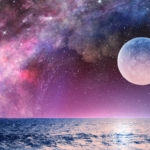
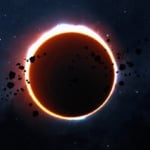
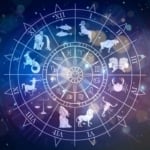
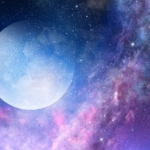
your chart has Gemini May 21 to June 20 ! Most places I have seen it goes to June21 and since my birthday is June 21 I have always considered myself a Gemini I am confused ??????????????????/
Hi! The stars are as complicated as they are simple. We use the sun sign timeframes, which can fluctuate, while horoscopes tend to be set dates. Technically there are 13 zodiacs that fall under the sun travels, and while some have accepted the changes, to be sure the astrology is as specific as possible, most still use the 12 zodiacal calendar.
Mary, It seems like your Sun sign on the cusp of Gemini/Cancer. Gemini season ends on June 20.